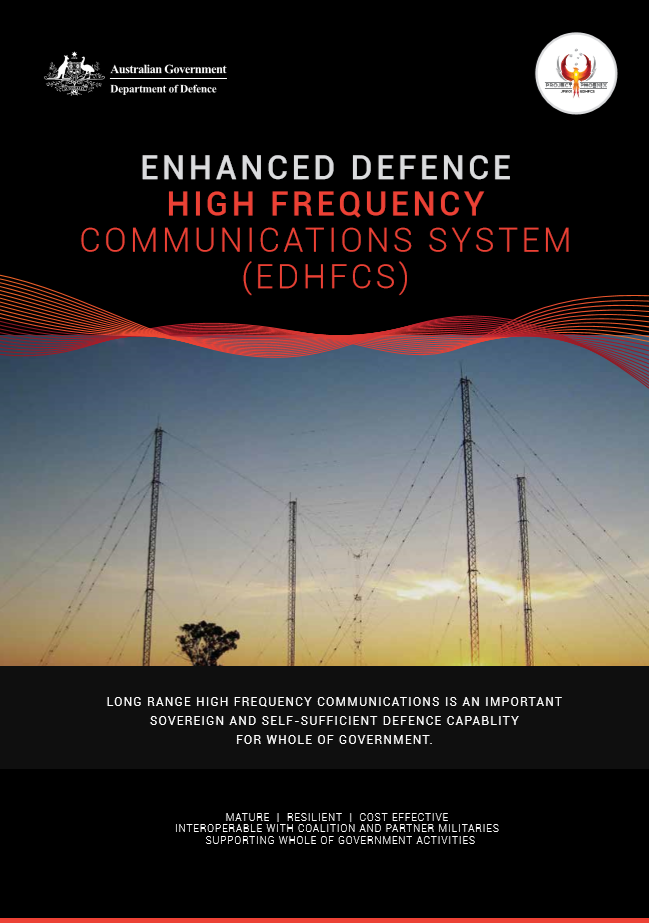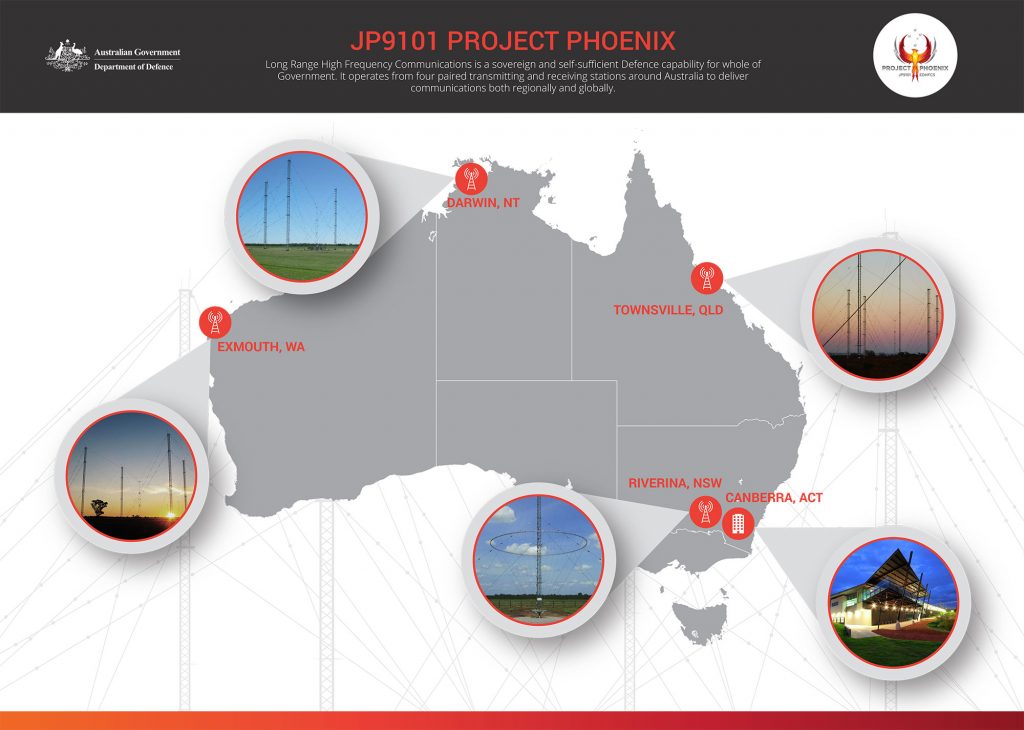Project Phoenix (JP9101)
Long Range High-Frequency communications is an important sovereign Defence capability that partners with other Australian Defence Force (ADF) long range communications capabilities such as satellite communication (SATCOM).
The Defence High-Frequency Communication System (DHFCS) provides wide-ranging interoperability with coalition and partner militaries as well as domestic commercial use for organisations such as Qantas. It is easily established and can support Whole of Government priorities including emergency response scenarios. Australia’s current DHFCS will reach its end of life in 2025.
An effective high frequency (EDHFCS) capability past this date is critical for Defence to maintain long-range Command and Control (C2) situational awareness in Satellite Denied, Degraded, Intermittent and Low Bandwidth Environments (D-DIL). Without it, Long Range communications support for Defence and Whole of Government activities is degraded.
Services
- Graphic design
- Communication strategy
- Stakeholder engagement
- Writing and editing
Given the critical importance of delivering superior situational awareness to the Australian warfighter, Project Phoenix (JP9101) was established to create an enhanced DHFCS capability (EDHFCS) through the application of smart high-frequency technology more aligned to the ADF’s modern digital needs. The project had numerous stakeholders inside the ADF (Army, Navy, Airforce), Federal Government and industry (Qantas).


As with many ‘’joint’’ projects, there were many internal and external stakeholders with various information needs to support the successful design and completion of the project.
As part of the project’s risk management, contentgroup was engaged to develop a strategic communication and stakeholder engagement plan between 2017 and 2018. This plan aimed to first map and then meet the information needs of the various audiences and stakeholder groups to ensure they understood what the improvements to the system would be, and when they would arrive.
contentgroup mapped the requirements across the life of the project, understood the objectives, identified audiences and influential stakeholders, designed the narrative, agreed on communication channels and content types (design, surveys, written content including intranet copy, video) and channels and agreed on a measurement and evaluation framework.
Once the plan was agreed upon, contentgroup produced the communication artefacts that were used in the tactical execution of the communication and engagement plan.
“I enjoyed working with the contentgroup team in applying their evidence-based framework (Content communication) to the Project Phoenix communication and engagement task. It brought a direction and clarity to the story we were telling to our different audiences and stakeholders. It unified our team around that story and helped us ensure that people understood what we were trying to achieve and by when. The subsequent communication assets produced were of the highest quality. The contentgroup team worked well with our other contractors (Dream/Think/Do) and were understanding of the realities of doing business in Defence. I would recommend them to any project or program manager with a complex story to tell.”
LTCOL James Brownlie, Deputy Director, High Frequency Communications JP9101


